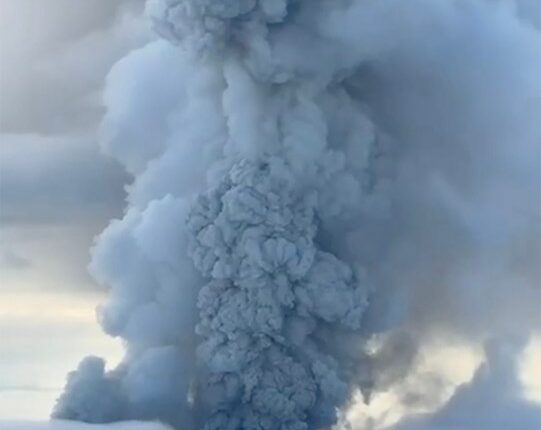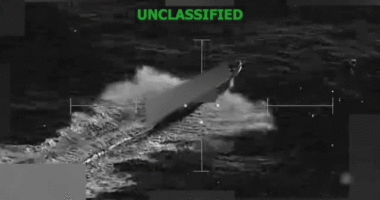Share this @internewscast.com
A RUSSIAN volcano has erupted for the first time in centuries, sending ash surging 29,000ft into the sky.
The volcano roared back to life in the Kamchatka region of eastern Russia after last week’s major 8.8 Richter scale earthquake.
Last week’s quake saw tsunami warnings issued across the Pacific Ocean.
Pilots have been warned of flight dangers with a red aviation alert after the eruption of Krasheninnikov.
While it is listed as an active stratovolcano, it has not erupted for around 600 years – before observations were made.
New footage emerged today of tsunami waves climbing up the land in the remote Kuril Islands.
A man and his dog were spotted escaping after a new alert was sounded due to another earthquake measuring 7 on the Richter scale in eastern Russia.
The dramatic footage was captured on Shumshu Island, just off the southern coast of the Kamchatka peninsula.
Vsevolod Yakovlev, who leads the Kronotsky Nature Reserve, mentioned today: “Such an eruption isn’t unusual for an area known for high volcanic activity.”
“During satellite monitoring, thermal spots have been repeatedly noted in the area of the Krasheninnikov volcano.
“This is a significant increase in temperature on the Earth’s surface compared to neighbouring areas.”
Tsunami warnings following last week’s quake have since been lifted.
Ash coated the Kronotsky Nature Reserve – which includes dozens of volcanoes.
It is also home to the Valley of the Geysers, and has one of the world’s largest concentrations of brown bears.
According to Russian volcanologist Alexei Ozerov, “A fissure has developed along the volcano from its crater peak, and a steam-gas mixture is presently emanating from this fissure.”
“Emissions are occurring, and a large amount of ash was ejected during the opening of the crater crack.
“This ash reached the Valley of Geysers, and …the smell of gas…
“A question is immediately raised about the evacuation of the Valley of Geysers, those tourists who are there.”
But according to Russian officials, there was no immediate threat to life or wildlife.
The response team said: “The explosive eruption of the volcano continues.
“Ash explosions up to 10 km (32,800 ft) above sea level could occur at any time.
“Ongoing activity could affect international and low-flying aircraft.”
The latest volcanic cloud height was estimated as up to 27,880 ft.























